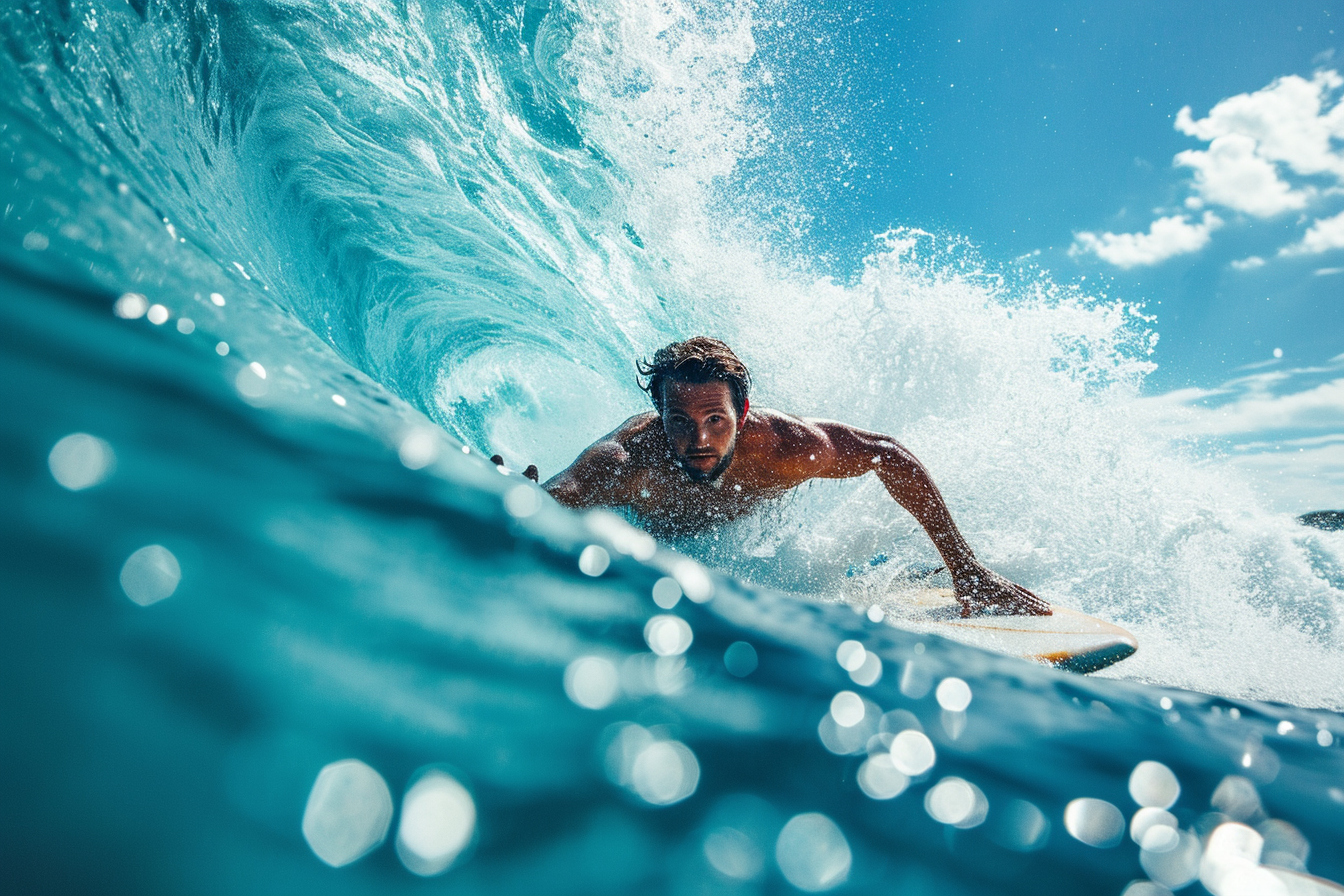Bodyboarding is a water sport that has captured the imaginations of adventure seekers and ocean enthusiasts alike. Originating in the Polynesian culture, the sport has evolved into a global phenomenon, with its own cadre of professional athletes, a burgeoning array of competitive events, and emerging trends influencing its progress. This comprehensive overview delves into the core aspects of bodyboarding competitions, shining a spotlight on the athletes who dominate the sport, the hallmark events that define its competitive landscape, and the trends shaping its future.
The athletes: heroes of the swell
Bodyboarders come from diverse backgrounds, but they all share a common passion for the thrill of riding waves. These athletes are adept at maneuvering their boards, executing flips, spins, and aerial maneuvers with precision and artistry. Unlike surfing, bodyboarding involves lying on the board or kneeling, which enables a different set of techniques and tricks.
Training and Dedication: The elite bodyboarders dedicate countless hours to train, both in the water and through physical conditioning on land. Their rigorous routines include cardiovascular workouts, strength training, and flexibility exercises tailored to enhance their performance and reduce the risk of injury.
Notable Figures: Pioneers such as Mike Stewart and Ben Player have become iconic within the sport. These individuals, with their multiple championship titles and innovative styles, have set the bar for what it takes to become a champion. They have inspired the next generation of bodyboarders, who are eager to leave their mark.
Competitions: showcases of skill and endurance
International Circuit: The competitive scene in bodyboarding is diverse, with events taking place in various countries across the globe. The International Bodyboarding Corporation (IBC) is the leading organization responsible for overseeing the international competitive framework. It orchestrates a series of events where bodyboarders can earn points and rise in the global rankings.
Principal Events: Certain competitions have gained prominence within the bodyboarding community for their history, challenging conditions, and the prestige associated with victory. Examples include the Arica Bodyboard Championship in Chile and the Pipeline Bodyboarding Contest in Hawaii. These contests are not only tests of individual skill but also the tactical ability of bodyboarders to read and adapt to the ocean’s caprices.
Format and Judging: Competitions typically follow a structured format with heats, semi-finals, and finals. Athletes are judged based on a variety of criteria, including wave selection, execution of maneuvers, control and fluidity, as well as the difficulty of the moves performed. A panel of experienced judges ensures that the standards are meticulously upheld during each event.
Trends: innovations and evolutions in the sport
Equipment Evolution: The bodyboards themselves, originally fashioned from wood and foam, have undergone significant modifications. Modern bodyboards are crafted using advanced materials such as polypropylene and feature channels and contoured decks for better control. These technological advancements enable athletes to push the boundaries of what is possible in terms of performance.
Style and Technique: As the sport has matured, so have the styles and techniques. Bodyboarders are continually experimenting with new maneuvers, often taking inspiration from other sports like skateboarding and gymnastics. This cross-pollination of ideas has led to an ever-expanding repertoire that athletes can draw from during competitions.
Women in Bodyboarding: A notable trend is the rise of female bodyboarders who are gaining recognition and achieving parity in a sport historically dominated by men. Women’s competitions are increasingly prevalent, with athletes such as Isabela Sousa and Alexandra Rinder becoming role models for aspiring bodyboarders worldwide.
Environmental Awareness: The bodyboarding community is becoming more eco-conscious, implementing practices to preserve the ocean environment. Athletes and event organizers often advocate for ocean conservation initiatives, recognizing that the future of the sport is inextricably linked to the health of marine ecosystems.
Media and Sponsorship: The advent of social media and digital platforms has revolutionized the way bodyboarding is consumed and promoted. Athletes and brands are harnessing these tools for greater exposure, attracting new fans and sponsors. This shift has the potential to bring more resources into the sport, allowing for larger prize purses and better support for the athletes.
Analyzing the current landscape and future potential
Growth Prospects: Bodyboarding has considerable growth potential, with untapped markets in regions where surfing and water sports are just starting to gain popularity. By fostering local communities and supporting grassroots competitions, the sport can expand its reach and cement its status as a mainstay in the extreme sports arena.
Challenges to Overcome: Despite the positive outlook, bodyboarding faces challenges, such as the need for improved professional infrastructure, a unified global tour, and increased media coverage. Addressing these issues is essential to ensure the sport’s longevity and continued success.
The Role of Innovation: Embracing innovation, be it through equipment design, competition formats, or marketing strategies, will be pivotal for bodyboarding’s progression. As technology advances and new trends emerge, the sport must adapt to stay relevant and appealing to the next wave of enthusiasts.
Engaging and informative content on bodyboarding competitions underscores the dynamic nature of this captivating sport. The athletes, with their dedication and prowess, are at the heart of the spectacle, drawing onlookers to the sport’s raw beauty and athleticism. The events serve as battlegrounds for these modern-day gladiators, while trends hint at an exciting future, with technology and social consciousness playing increasingly crucial roles.
By understanding the intricate balance between tradition and innovation that defines bodyboarding, enthusiasts and newcomers alike can appreciate the nuances of every carved turn and airborne maneuver. As the sport continues to evolve, its community holds fast to the spirit of camaraderie and adventure that first brought riders to the ocean’s edge. The drive to push limits, discover new horizons, and celebrate the shared passion for bodyboarding remains undiminished.


Leave a Reply